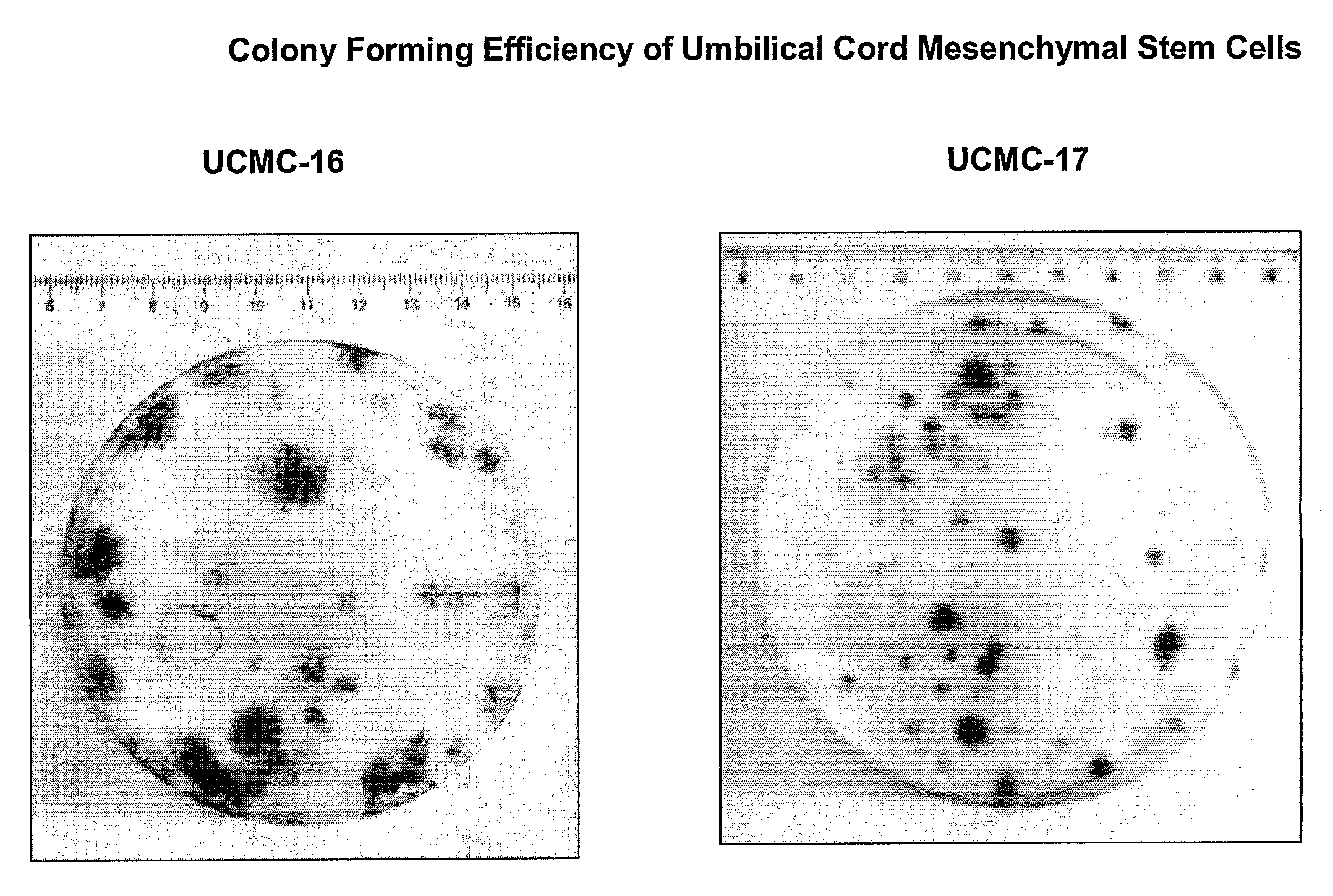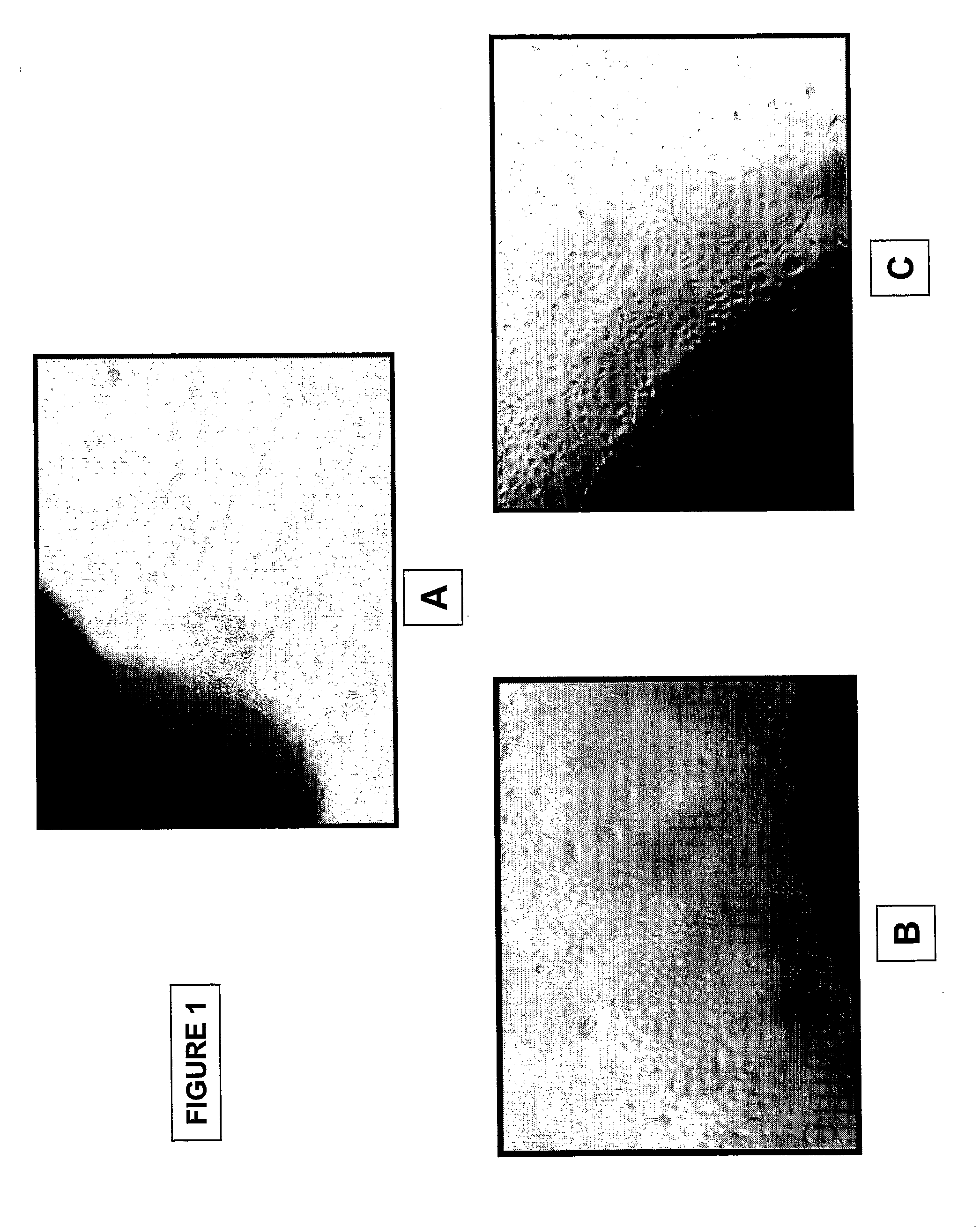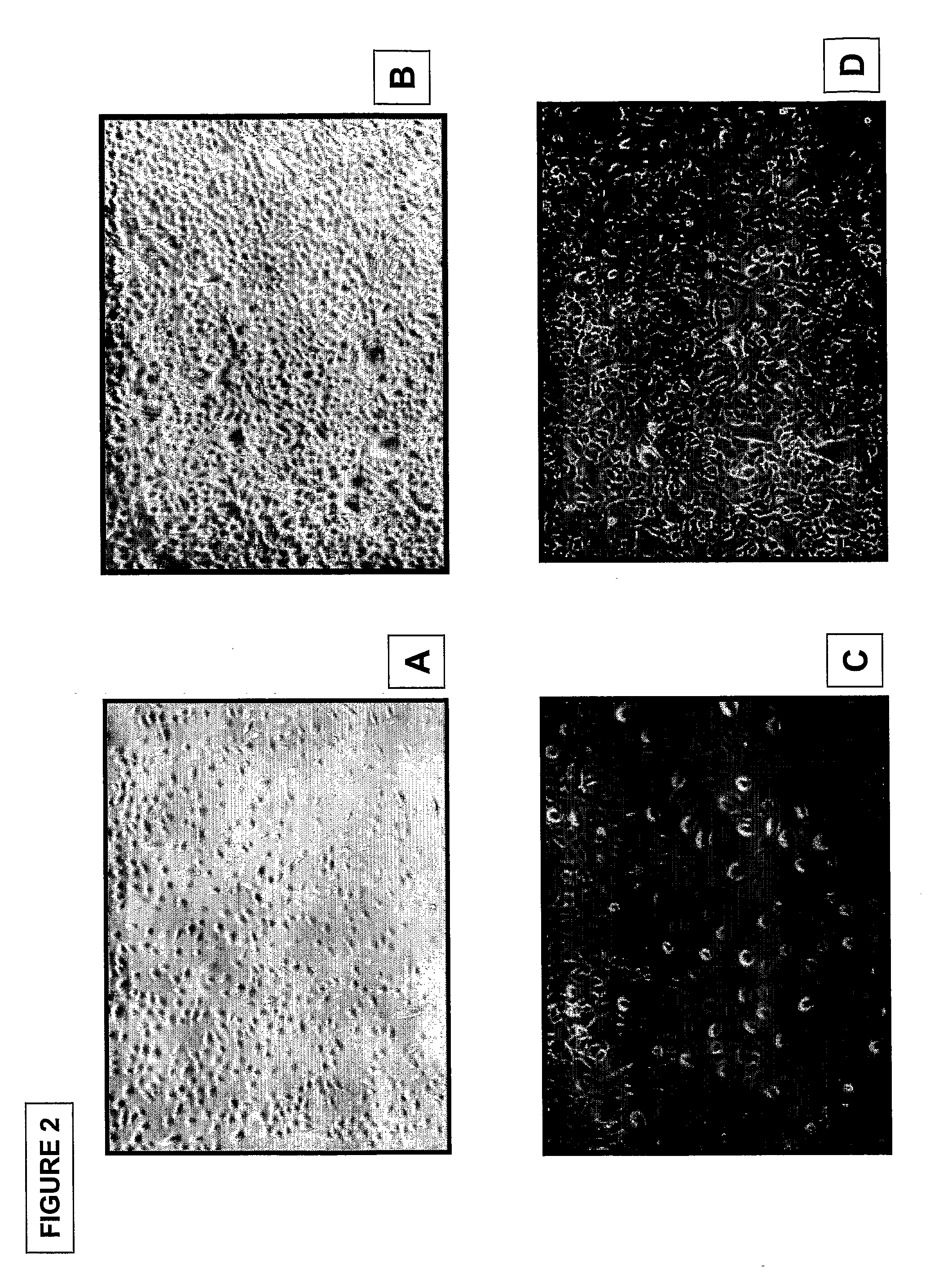Isolation and Cultivation of Stem/Progenitor Cells From the Amniotic Membrane of Umbilical Cord and Uses of Cells Differentiated Therefrom
a technology of amniotic membrane and stem cells, which is applied in the field of skin equivalent, can solve the problems of many ethical problems, low number of stem cells extracted, and high cost of collection
- Summary
- Abstract
- Description
- Claims
- Application Information
AI Technical Summary
Benefits of technology
Problems solved by technology
Method used
Image
Examples
example 1
Collection of Umbilical Cord Tissue
[0182]Umbilical cord tissue is collected immediately after delivery of the child. The specimen is rinsed clean and immediately transferred into a 500 ml sterile glass bottle containing culture transport medium (L-15 medium supplemented with 50 IU / ml penicillin, 50 μg / ml streptomycin, 250 μg / ml fungizone, 50 μg / ml gentamicin; all reagents purchased from Invitrogen) prior to transport to the laboratory. In the laboratory, stem cell extraction is conducted in a laminar flow hood under sterile conditions. The specimen is first transferred to a sterile stainless steel tray. All remaining blood in the cord vessels is removed by multiple syringing washes using warm phosphate-buffered saline (PBS) supplemented with 5 IU / ml heparin (from Sigma-Aldrich, Missouri, USA). Plain PBS without heparin is used in the final washes. The umbilical cord tissue specimen is then cut into pieces 2 cm in length and transferred into 10 cm diameter cell culture dishes, where ...
example 2
Cell Separation / Cultivation
[0183]Dissection of umbilical cord tissue is first performed to separate the umbilical cord amniotic membrane from Wharton's jelly (i.e. the matrix of umbilical cord) and other internal components. The isolated amniotic membrane is then cut into small pieces (0.5 cm×0.5 cm) for cell isolation. Explant is performed by placing the pieces of umbilical cord amniotic membrane on tissue culture dishes at different cell culture conditions for isolation of either epithelial or mesenchymal stem cells.
[0184]For mesenchymal cell separation / cultivation, the explants were submerged in 5 ml DMEM (Invitrogen Corporation, California, USA) supplemented with 10% fetal bovine serum (Hyclone, Utah, USA) (DMEM / 10% FBS) and maintained in a CO2 cell culture incubator at 37° C. The medium was changed every 2 or 3 days. Cell outgrowth was monitored under light microscopy. Outgrowing cells were harvested by trypsinization (0.125% trypsin / 0.05% EDTA) for further expansion and cryo-p...
example 3
Identification of Stem / Progenitor Cells
[0190]Epithelial cells: FIG. 1 shows pictures of outgrowing epithelial cells from umbilical cord amniotic membrane prepared by the method using tissue explant (40× magnification). Pictures were taken at day 2 (FIG. 1A) and day 5 (FIG. 1B, C) of tissue culture. Cell morphology analysis demonstrated polyhedral shaped epithelial-like cells. Enzymatic digestion of the umbilical cord segments yielded similar (FIG. 2), epithelial cells at day 2 (FIG. A, C) and day 5 (FIG. B, D) (40× magnification). FIG. 7 shows pictures of colony formation of epithelial stem cells from umbilical cord amniotic membrane cultured on feeder layer using Green's method (40× magnification). A colony of polyhedral shaped epithelial-like cells expanded rapidly from day 3 to day 7.
[0191]Mesenchymal cells: Outgrowth of mesenchymal cells explanted from umbilical cord amniotic membrane was observed as early as 48 hours after placement in tissue culture dishes using CMRL-1066 supp...
PUM
| Property | Measurement | Unit |
|---|---|---|
| v/v | aaaaa | aaaaa |
| surface area | aaaaa | aaaaa |
| thick | aaaaa | aaaaa |
Abstract
Description
Claims
Application Information
 Login to View More
Login to View More - R&D
- Intellectual Property
- Life Sciences
- Materials
- Tech Scout
- Unparalleled Data Quality
- Higher Quality Content
- 60% Fewer Hallucinations
Browse by: Latest US Patents, China's latest patents, Technical Efficacy Thesaurus, Application Domain, Technology Topic, Popular Technical Reports.
© 2025 PatSnap. All rights reserved.Legal|Privacy policy|Modern Slavery Act Transparency Statement|Sitemap|About US| Contact US: help@patsnap.com



